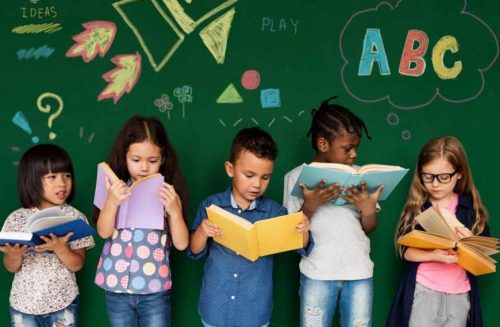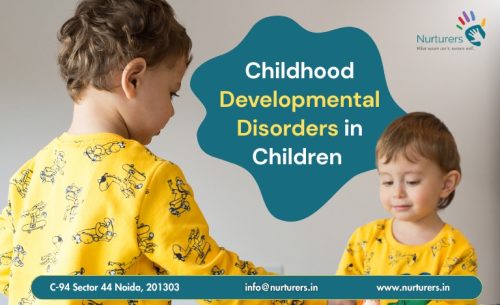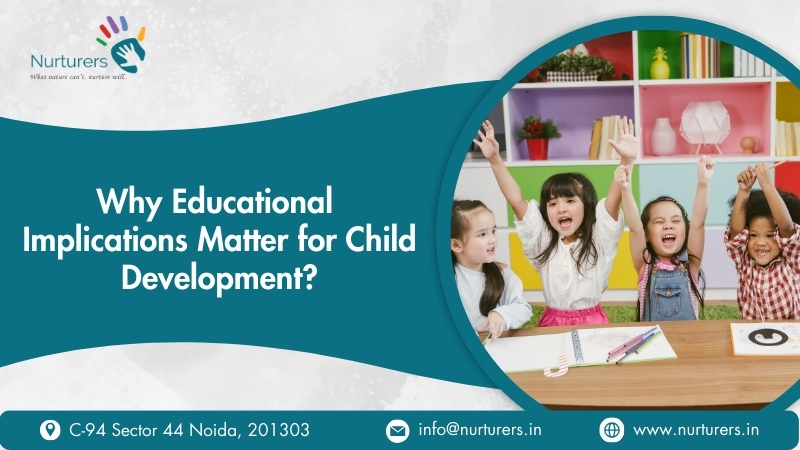Educational implications play a vital role in shaping a child’s overall growth, learning, and future opportunities. They refer to the practical ways in which educational theories, research, and strategies are applied to support a child’s unique needs and potential. In the context of child development, understanding these implications helps educators, parents, and therapists create learning environments that foster intellectual, emotional, social, and physical progress. For children with or without Childhood Developmental Disorders, applying the right educational approaches can significantly enhance language and communication skills, problem-solving abilities, and confidence.
By aligning teaching methods with a child’s stage of growth and development, educational implications ensure that every child receives meaningful, inclusive, and effective learning experiences that prepare them for lifelong success.
Understanding Educational Implications Meaning
The educational implications meaning is simple yet profound—it explains how our knowledge of a child’s abilities, learning style, and challenges can guide the way we teach them. For instance, if a child struggles with reading comprehension, teachers may introduce more visual aids, interactive activities, and real-life examples to make learning easier.
This understanding goes beyond academics. It influences how classrooms are arranged, how lessons are planned, and even how communication between teachers and parents takes place. By carefully applying educational implications, learning becomes more effective, engaging, and accessible for every child.

Role in Growth and Development
A child’s growth and development is a holistic journey that unfolds across physical, cognitive, emotional, and social dimensions. Each of these areas is deeply interconnected, and education plays a central role in shaping them. When educational implications are understood and applied effectively, they create a learning environment that supports the whole child, not just their academic skills.
- Cognitive Development: Cognitive growth refers to the development of a child’s thinking, reasoning, problem-solving, and decision-making abilities. Well-planned educational strategies—such as open-ended questions, real-life problem-solving tasks, science experiments, and creative projects—stimulate curiosity and analytical thinking.
- Physical Development: Physical growth is not only about height and weight; it also includes fine and gross motor skills, hand-eye coordination, and overall physical health. Education that incorporates movement—through activities like dance, yoga, sports, art, and craft—supports these skills while also keeping children active and engaged.
- Social and Emotional Development: Social skills and emotional intelligence are essential for building relationships, handling challenges, and adapting to different environments. Group projects, peer discussions, classroom debates, and cooperative games help children practice empathy, patience, and effective communication. Emotional growth is nurtured when educators create safe spaces where children feel heard, valued, and respected.
- Language and Communication Skills: An important aspect of both cognitive and social growth is language and communication development. Educational activities that include storytelling, role-play, group reading, and public speaking opportunities strengthen vocabulary, clarity of expression, and listening skills. For children with Childhood Developmental Disorders, targeted speech therapy exercises or visual communication aids can significantly enhance progress in this area.
Educational implications ensure that these developmental aspects are addressed together, allowing children to grow into confident and capable individuals. Without this understanding, there’s a risk of focusing only on academics while neglecting emotional and social needs.

Educational Implications for Childhood Developmental Disorders
Children with Childhood Developmental Disorders often process and respond to learning differently, making it essential to adapt teaching methods to their needs. The right educational implications ensure they feel supported, engaged, and able to achieve their potential.
- Autism Spectrum Disorder (ASD): Structured environments, visual schedules, sensory-friendly setups, and consistent routines reduce anxiety and improve focus. Incorporating a child’s special interests into lessons can make learning more engaging and relatable.
- ADHD: Short, focused lessons with regular movement breaks help sustain attention. Hands-on activities and interactive learning channels their energy in a productive way.
- Speech and Language Disorders: Speech therapy, storytelling, singing, and visual communication aids strengthen language and communication skills. Peer-pairing can encourage conversational practice in a natural setting.
- Learning Disabilities: Multi-sensory techniques—such as combining visuals, sounds, and physical activities—make lessons more memorable. For example, tracing letters while saying them aloud can improve spelling retention.
These approaches are never one-size-fits-all; they are customized to match each child’s strengths, challenges, and learning pace. Individualized plans and collaboration between parents, teachers, and therapists ensure progress in both academics and overall growth and development.

Language and Communication as Core Learning Areas
Strong language and communication skills are at the heart of a child’s ability to learn, connect, and succeed. They influence not only academic performance but also social relationships, emotional expression, and self-confidence. When children can clearly express ideas, understand instructions, and interpret the feelings of others, they are better equipped to navigate both school and everyday life.
Educational implications in this area go beyond teaching vocabulary or grammar—they involve creating rich, interactive opportunities for communication in different contexts. Some effective strategies include:
- Reading stories aloud and discussing meaning: This helps children expand their vocabulary, improve comprehension, and learn how to think critically about what they hear or read. Asking open-ended questions after a story encourages deeper engagement.
- Role-play and dramatization: Acting out real-life scenarios such as ordering food, visiting a doctor, or solving a problem with a friend enhances conversational skills and teaches appropriate social responses.
- Encouraging peer discussions: Group activities and debates help children practice active listening, respect different viewpoints, and speak with confidence in front of others.
- Visual cues and alternative communication methods: For children with speech delays or other Childhood Developmental Disorders, tools such as flashcards, picture boards, sign language, and assistive communication devices can make interactions smoother and more inclusive.
These strategies do more than improve literacy—they create a strong foundation for growth and development in all areas. Children who can communicate effectively are more likely to participate actively in class, build friendships, and express their needs without frustration. For those with developmental delays, early focus on language and communication can significantly improve long-term learning outcomes and social integration.

Why Parents and Educators Must Work Together
The most effective application of educational implications happens when parents, teachers, and therapists collaborate. Parents provide insight into a child’s habits, strengths, and challenges outside of school, while educators bring expertise in curriculum design and developmental strategies.
For example, if a child is receiving speech therapy at home, teachers can reinforce the same language and communication exercises in class. This consistency speeds up progress and supports overall growth and development.
The Long-Term Impact of Educational Implications
The positive effects of applying the right educational implications extend far beyond the classroom—they shape the child’s future in academic, social, and personal domains. When teaching strategies are thoughtfully adapted to a child’s needs, the benefits are not only immediate but also long-lasting.
- Better Academic Performance: When lessons are designed to match a child’s learning style, education becomes both effective and enjoyable. Concepts are understood more deeply, and children are more motivated to participate. For example, a child who once struggled with math may excel when taught through visual aids, games, or real-life applications.
- Improved Social Skills: Group learning, cooperative projects, and peer interaction teach children how to share, collaborate, and resolve conflicts. These skills are invaluable for building friendships, working in teams, and adapting to new environments later in life.
- Higher Confidence: Personalized learning approaches help children experience success at their own pace, which boosts their self-esteem. When children see their progress—whether it’s reading a book independently or solving a problem—they begin to believe in their own abilities, fostering resilience.
- Life Skills Development: Education is not just about academics—it equips children with essential life skills such as time management, decision-making, problem-solving, and communication. These skills prepare them for independent living and responsible adulthood.
In essence, effective educational implications plant the seeds for lifelong success. They ensure that children are not only knowledgeable but also confident, adaptable, and ready to face the world’s challenges with skill and optimism.

Conclusion
Educational implications are more than just a teaching approach—they are a roadmap to nurturing a child’s potential. Understanding educational implications meaning allows us to design strategies that promote growth and development, enhance language and communication, and support the needs of children with Childhood Developmental Disorders.
At Nurturers, we believe that when education meets understanding, every child can succeed. By applying these insights, we can ensure that no child is left behind, and every child’s unique abilities are celebrated.

